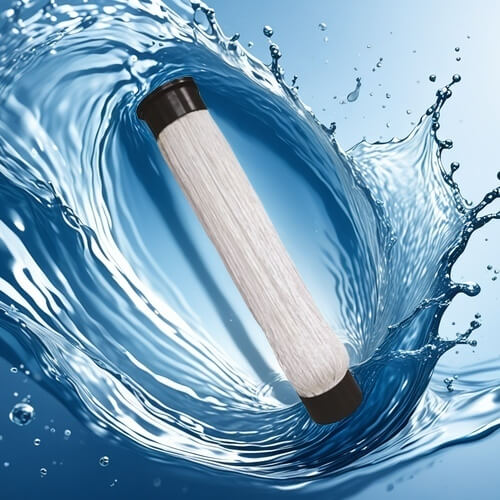What is a grit chamber in wastewater treatment?
1. Definition and function
A grit chamber is a pretreatment facility in wastewater treatment process. Its main function is to remove inorganic particles with large relative density and particle size in wastewater, such as sand, gravel, coal slag, slag, etc. If these particulate matter are not removed in advance, they will cause wear in subsequent treatment equipment (such as water pumps, pipes, aeration equipment, etc.), and may also be deposited in facilities such as sedimentation tanks, affecting the treatment effect.
2. Working principle
Gravity sedimentation principle: According to Stokes’ law, the sedimentation rate of particles in a static fluid is related to the particle size, density of the particles, and the density and viscosity of the fluid. In a grit chamber, wastewater flows slowly at a certain flow rate, so that inorganic particles gradually settle to the bottom of the tank under the action of gravity. When the sedimentation rate of the particles is greater than the horizontal flow rate of the wastewater, the particles can be effectively precipitated.
For example, for particles with large relative density and large particle size, such as sand, under appropriate hydraulic conditions, its sedimentation rate can ensure that it settles in the grit chamber. Organic particles (such as food residues, etc.) have a relatively low density. Under the hydraulic conditions set in the grit chamber, they usually do not settle or settle very slowly, and will flow out of the grit chamber with the water flow into the subsequent treatment unit.

3. Types and characteristics
Horizontal flow grit chamber
Structural characteristics: Horizontal flow grit chamber is the most common type. It is generally rectangular in shape, and the wastewater flows horizontally in the chamber. There is an inlet at one end of the chamber and an outlet at the other end, and a sand discharge device is provided at the bottom.
Working process: After the wastewater enters the grit chamber from the inlet, it flows horizontally at a low flow rate (generally 0.15 – 0.3m/s). Inorganic particles such as sand settle to the bottom of the chamber under the action of gravity, and the precipitated water flows out from the outlet. The advantages of this grit chamber are simple structure, low cost, and stable treatment effect; the disadvantages are that it occupies a relatively large area and the sand discharge equipment is easily blocked.
Vertical flow grit chamber
Structural features: The plane shape of the vertical flow grit chamber is generally circular. Wastewater enters the chamber from the central pipe, flows from top to bottom, and then flows out from the periphery of the chamber.
Working process: The sewage flows vertically in the chamber. Since the flow rate varies at different heights, the sand particles settle in the vertical direction. The advantages of this type of grit chamber are that it occupies a small area and is convenient for sand discharge; the disadvantages are that the structure is relatively complex and the treatment effect is greatly affected by the flow rate change.
Aerated grit chamber
Structural features: The aerated grit chamber is an aeration device installed on one side of the chamber, and aeration is used to generate a vertical vortex in the wastewater. The chamber body is generally rectangular, with an aerator on one side of the bottom. The wastewater enters from one end and flows out from the other end.
Working process: The vortex generated by aeration separates the sand particles from the organic matter. The sand particles settle to the bottom of the chamber under the action of centrifugal force and gravity, while the organic matter is not easy to settle due to the stirring effect of aeration, and flows out of the grit chamber with the water flow. The advantage of this type of grit chamber is that it can effectively separate sand and organic matter, which is beneficial for subsequent treatment; the disadvantage is that it requires a certain amount of energy for aeration, and the equipment maintenance is relatively complicated.
4. Key points of operation management
Flow rate control: Ensure that the water flow rate in the grit chamber is appropriate. If the flow rate is too fast, sand and other particles will be carried out of the grit chamber by the water flow before they can settle; if the flow rate is too slow, the treatment capacity of the grit chamber will decrease, and excessive organic matter may also be precipitated. For example, in a horizontal flow grit chamber, the flow rate needs to be controlled by adjusting the water inlet gate.
Sand discharge operation: Regular sand discharge is the key to ensuring the normal operation of the grit chamber. The frequency of sand discharge depends on the content of sand in the influent. If the sand is not discharged in time, excessive sand accumulation will affect the sedimentation effect of the grit chamber. For different types of grit chambers, the sand discharge methods are different. For example, a horizontal flow grit chamber can use mechanical sand scraping or air lift sand discharge.
Equipment maintenance: For grit chambers with aeration equipment, such as aerated grit chambers, it is necessary to regularly inspect and maintain the aeration equipment to ensure uniform aeration and appropriate intensity. At the same time, the sealing of the chamber body should be checked to prevent wastewater leakage.
